Venezuela had a cargo airline that, by the early 1950s, was among the major players of the industry, and had more aircraft than any other serving routes in North, Central and South America. A –then- young aviator named Carlos Abraham Chávez established it in Caracas with the financial support of Keath Mitchell and Everett Jones, both U.S Citizens. In the beginning, the nascent company took advantage of the need to supply the capital of Venezuela with fresh meat, given the scarcity of roads and a rainy season that caused many damages to the few existing ones. In addition, the growing commerce from and to the U.S., already channeled through Miami, and the availability of a large quantity of surplus cargo aircraft, facilitated the formation of the company that took up the name Rutas Aéreas Nacionales, S.A. (National Air Routes) or RANSA.
By the end of the decade of 1940, RANSA provided employment for 24 pilots who, flying four DC-3 and a similar number of Curtiss C-46s, completed between 15 and 20 weekly flights. The company was founded with less than half a million Bolívares (Venezuelan currency) by Captain Chavez, in September 1948.
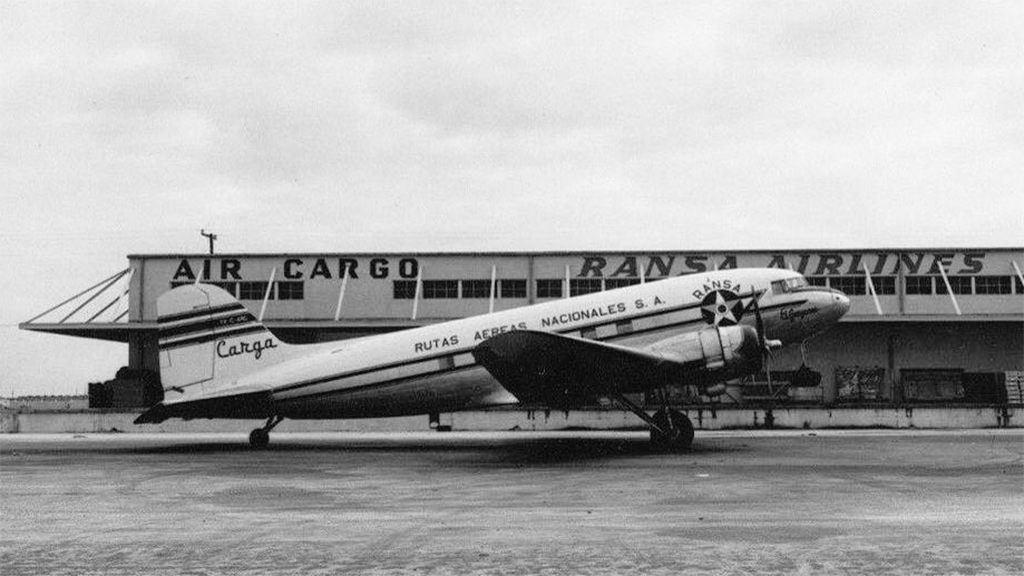
As mentioned, the scarcity of meat and other products that had to be transported by air to Caracas, served to help RANSA to grow fast. At that time, there was a government organization called the “Comisión Nacional de Abastecimiento” (National Supply Commission) that hired the C-47 that Captain Chavez had just brought in from Miami, and that he had christened as “Venezuela” upon arrival at Maiquetia. From then on, and not without sacrifices and with lots of hard work, Chavez and his partners devoted themselves to find customers and to expand their business, no only in the cargo transportation business, but also in passenger transportation, although these services had a secondary importance due to the dominance of renowned companies such as AEROPOSTAL and AVENSA.
Between 1949 and 1962, RANSA’s fleet kept growing with the acquisition of a DC-7CF, a DC-6A, five Boeing 377s, 30 Curtiss C-46s, an additional C-47 and three DC-3s. The partners also acquired a couple of new De Havilland Beavers to provide the State of Apure, with air-taxi services; they also purchased an extremely peculiar airplane known as the Burnelli CBY-3 Loadmaster.
A twin engine airplane, the Loadmaster was an exceptional both in design and performance. It had all the flying characteristics of the DC-3, but with the cargo capacity of the Curtiss C-46, something really fantastic! For some of those who study U.S. aviation and the industrial and military policies of that country, the CBY-3 and its capabilities were the very cause for the demise of the project for producing it in large numbers. A product of the mind of the designer-builder Vincent Justus Burnelli, a Texan, who as a young man, came up with concepts so advanced that weren’t seriously considered until after the end of World War II or even until the early stages of the space exploration era.
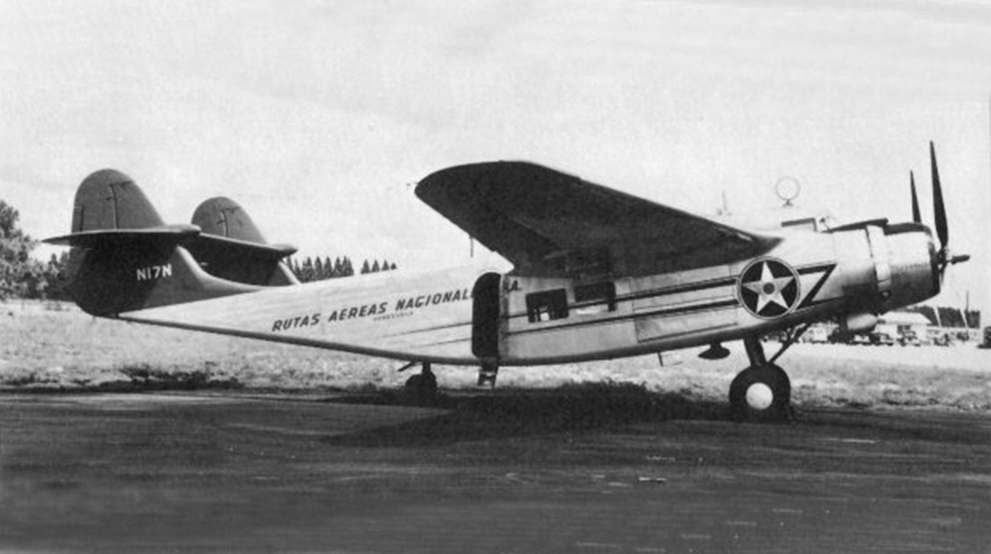
The CBY-3 acquired by RANSA was registered in Venezuela as YV-C-ERC, having carried previously the registration N17N in the United States. And according to what can be gleaned from the few photos available, the airplane was equipped with two Pratt & Whitney R-1830- engines, similar to those used on the Curtiss C-46. Its specifications stated that the CBY-3 was capable of carrying 22 passengers or 10,000 kg of cargo.
Captain Guido Damiani, one of RANSA pilots, stated the following:
“This airplane was taken to Miami by Vincent Burnelli and his pilot J. Fredericks. There was a demonstration flight, during which the following RANSA pilots had the chance to fly it; Besides me, these pilots were Arthur Jones, Angel Delgado, Albert Robinson, Guillermo Cole, Felipe Grillo, and Carlos Díaz Nurse.
I remember when Robinson flew it, he attempted a stall at some 7,000 feet over the Sands area (Southwest from Biscayne); the aircraft entered in a spin and we recovered it at about 1,500 feet; that was a fall that went past the vertical, and of course the ballast -comprised of 55 gal. barrels full of water- came loose, almost killing all of us. Obviously, the demonstration was suspended. Unfortunately, I do not remember the exact date when this happened. In any case, the next day, the airplane was flown to Maiquetia by Burnelli, Fredericks and Delgado, in order to conduct certification flights since the plan was to service domestic route with it. In the end, the Ministry of Communications issued the airplane with a certificate that limited its max cargo load to 3,500 kg, making it completely unprofitable. Shortly after, the airplane was flown back to Miami, and that was the last I knew about it.”
Captain Damiani also adds:
“The intention was to modify the CBY-3 with turbines; RANSA would be footing the bill for the conversion and, later on, would produce the jet-powered Loadmasters. Without any doubt, it would have been an extremely interesting project. However, the airline purchased five Boeing Stratocruisers in August 1963, and the project was shelved. In fact, I had the opportunity to fly these gigantic airplanes during their first flights in Venezuela, and a few weeks later, I ferried back to the U.S. three of the airplanes that would be later converted to Super Guppies.”
Regarding the airplane, it miraculously survives at the New England Aviation Museum, where a team of experts has patiently restored it to static exhibit status.
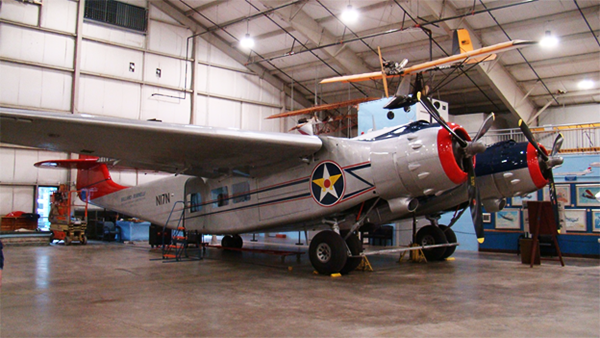

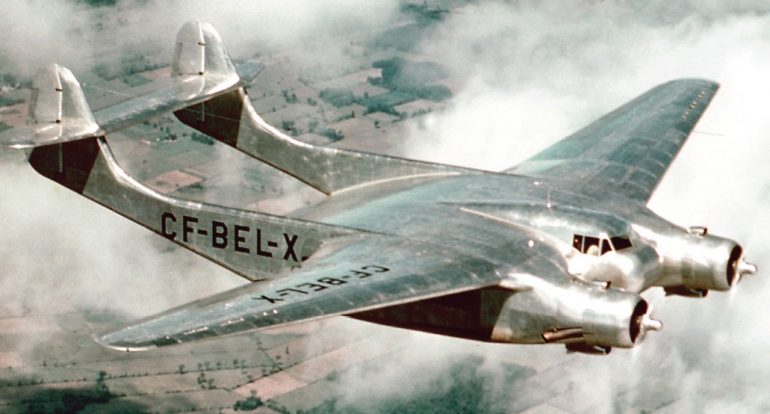
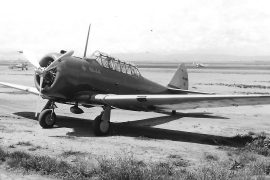
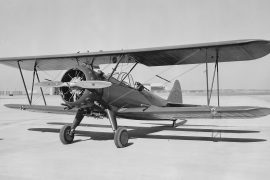
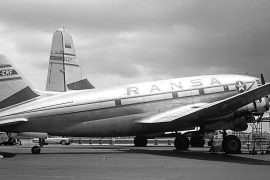
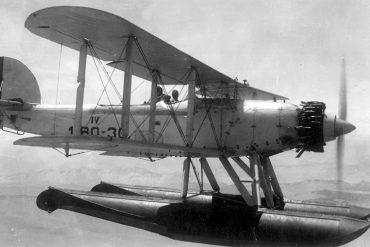
I knew many TACA Pilots who would not fly this plane, dangerous. One was a Chief Pilot for an airline. I have many pictures of this plane back then, some are in my TACA book. You mention an R1830 on the C-46 which I flew, it had R2800. Regards
Paul, the CBY-3 was never in the TACA fleet. The one that this article is about, and that now is in the New England Air Museum, is the only one ever built. TACA did operate a precursor to the CBY-3 (I don’t know the designation) and Capt. Ed Brice would tell me about it when I flew copilot for him on the TAN C-46. Whether that earlier model was dangerous or not, I don’t know.
You wouldn’t happen to be related to that Yerex as in the “Y” in CBY-3 would you? I’m one of the men that restored the CBY-3 at NEAM. It is my personal favorite aircraft ever built and I regard it as was on the prettiest in its own way.
Hello I see you said you flew with him, can you tell me more about this statement From Paul Holsen II Captain Ed Brice flew first A/C to start BWIA, a Lockheed, called him the Gentleman Pilot as always wore a business suite before uniforms. Flew most of his life for TACA, flew with him many times. He retired flying DC-6 type.
Hello. I am trying to track down information on the former Sales Manager for RANSA Airlines. He worked between Miami and Caracas in 1963. Would you be able to assist me? I sent you a message via Facebook Messenger as well. Please feel free to email me.
Thank you!
Theresa Trebon
can anyone tell me more about this statement From Paul Holsen II Captain Ed Brice flew first A/C to start BWIA, a Lockheed, called him the Gentleman Pilot as always wore a business suite before uniforms. Flew most of his life for TACA, flew with him many times. He retired flying DC-6 type.